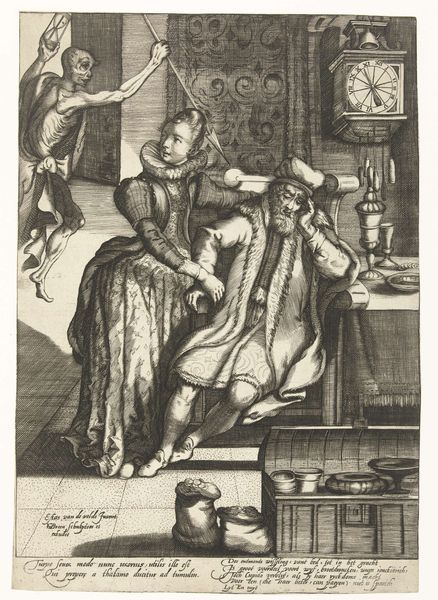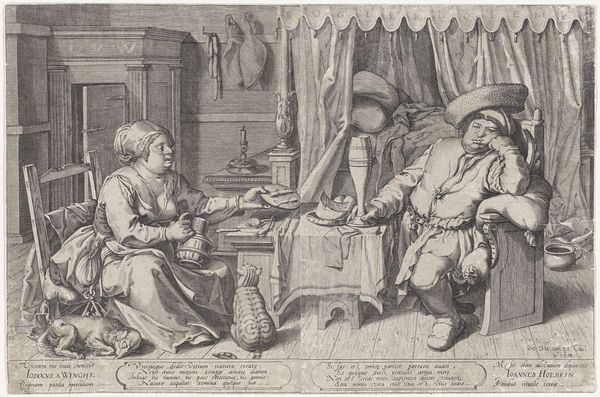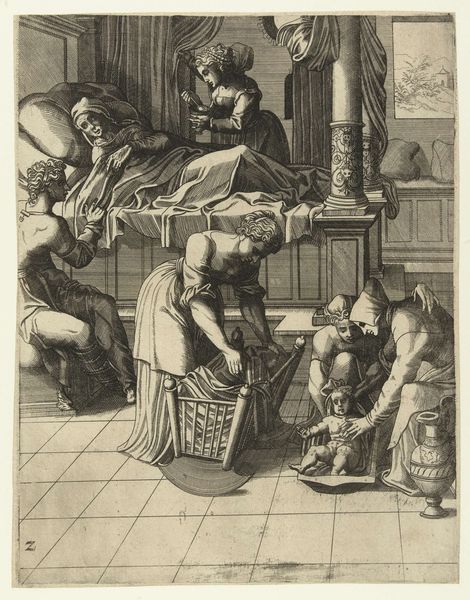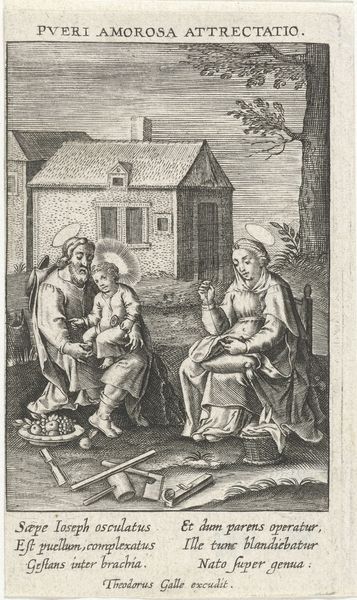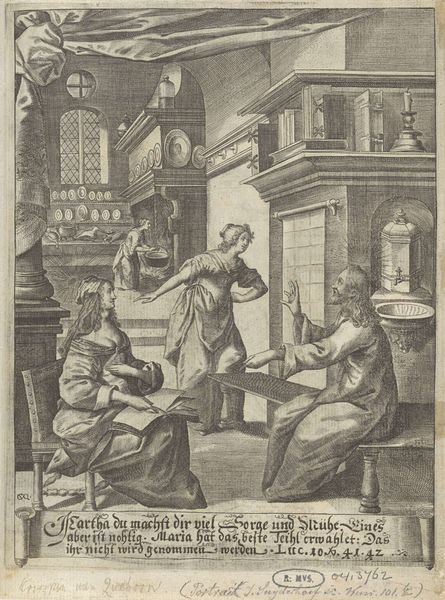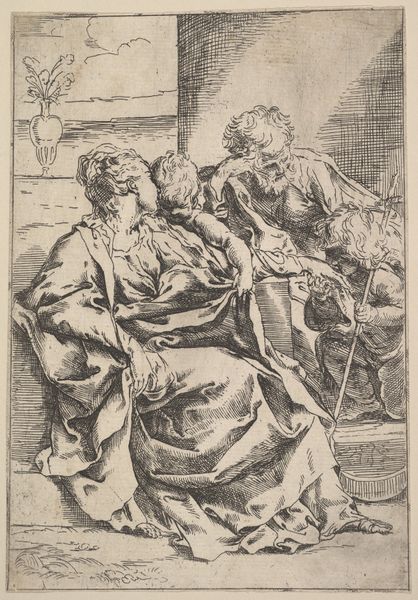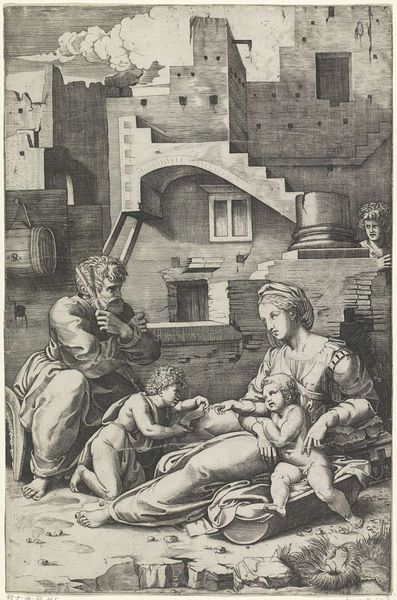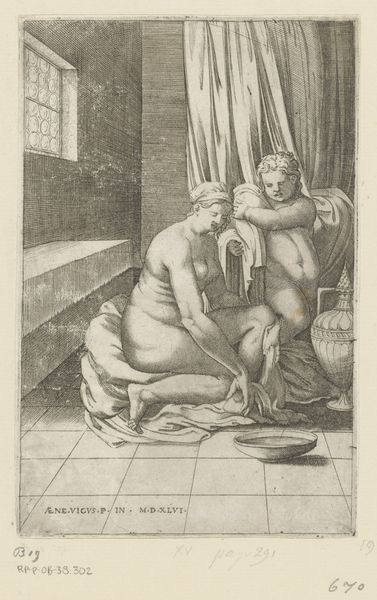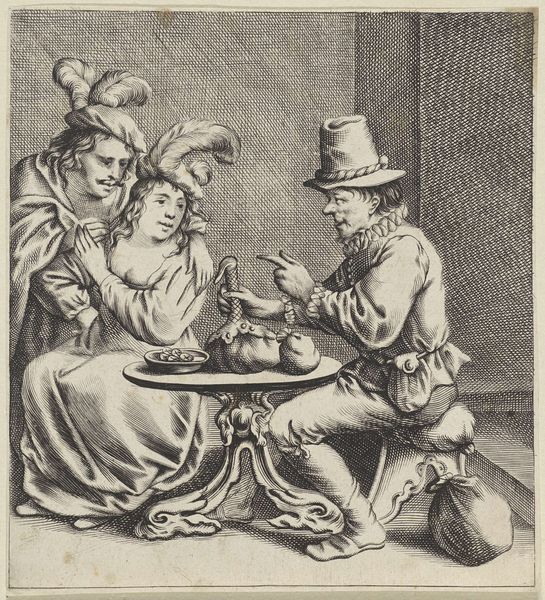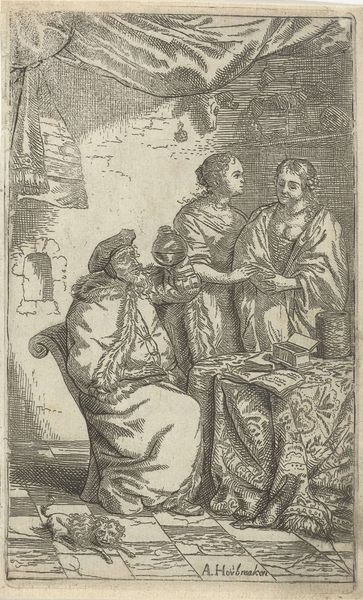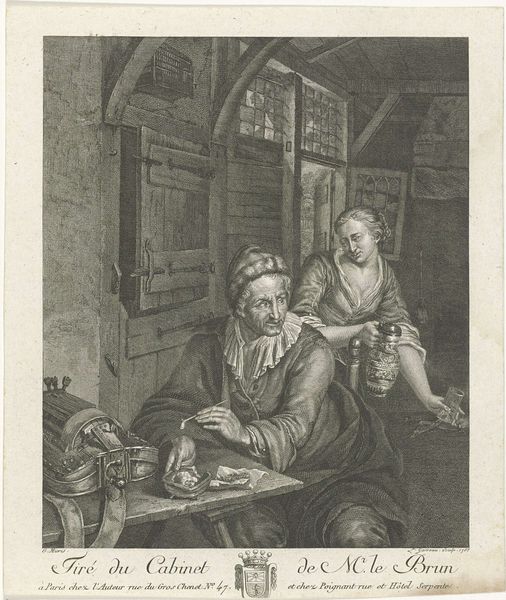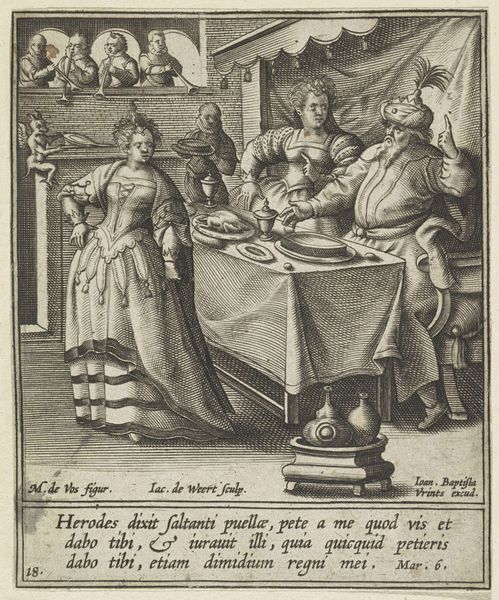
print, etching, engraving
#
narrative-art
#
baroque
# print
#
etching
#
figuration
#
genre-painting
#
history-painting
#
engraving
Dimensions: height 258 mm, width 176 mm
Copyright: Rijks Museum: Open Domain
Curator: Look at this engraving, "Ongelijke liefde," or "Unequal Love," by Gillis van Breen. It was produced sometime before 1618, and it's currently held in the Rijksmuseum collection. Editor: Ooh, dark! My initial reaction is melancholy. The fine lines almost feel oppressive. The older gentleman looks weighed down, while the younger woman seems almost too sharp, too...crisp? Curator: Right, crisp. Consider the material conditions. As an engraving, the image relies on a very labor-intensive process. Copper plate engraving allows for intricate detail. And prints circulated widely. Think about how this impacts our reading of a scene focused on social disparity. What meanings were produced and circulated as copies went into numerous hands? Editor: It’s potent stuff. There's the stark contrast between the figures—his aged, slumped posture, and her youthful vitality, rendered almost cruelly in those sharp lines you mentioned. And that overflowing treasure chest! I get a feeling this isn't about romantic love. Cupid's off to the side too, and looks annoyed. Is this about social climbing, a transactional relationship? Curator: Exactly. This isn't a celebration; it's a critique. Breen presents a "genre-painting" mixed with "history painting" in a highly self-conscious form, to critique economic imbalances in early modern relationships. It highlights concerns about social mobility and gender roles. How material wealth influences intimacy, domesticity and status, all filtered through skilled labor and artistic representation. Editor: Absolutely, the details underline this idea— the cupid isn't doing much to encourage affections! He seems rather bothered. Curator: The etching technique supports that! Lines here aren't flowing romantically, but create stark shadows around their faces; you note the “dark” or heavy mood because tonal qualities themselves stem directly from a mechanical process intended for replication to a consuming market, making explicit commentary upon “value”. Editor: Right! You've got it—it really complicates those easy ideas about romance, turning something supposedly tender and sentimental, completely upside down. And those lines, initially unsettling, actually enhance that sense of unease. It’s clever to transform what you feel. Curator: Yes. Looking back, analyzing not just who, but what materials went into this work gives greater meaning for those willing to view such a difficult picture about inequality then or now.
Comments
No comments
Be the first to comment and join the conversation on the ultimate creative platform.
